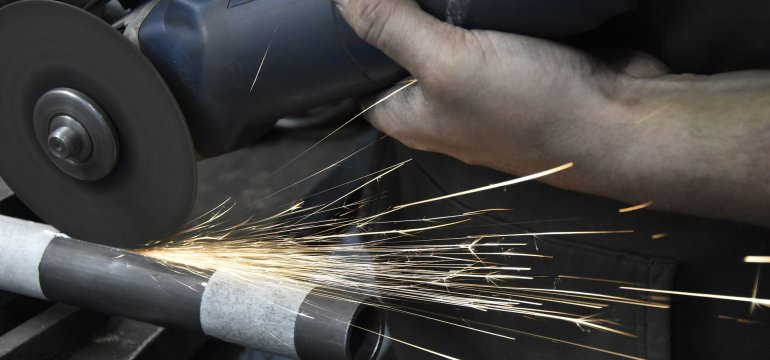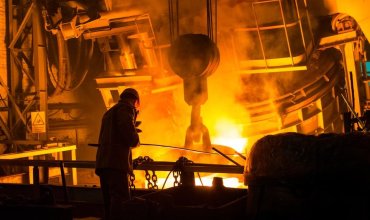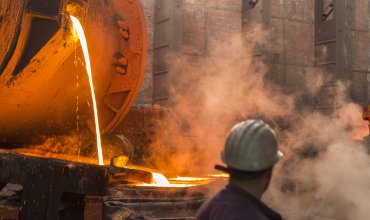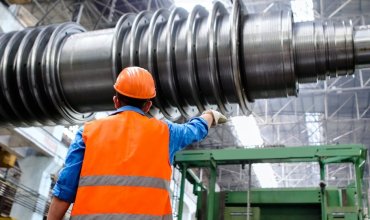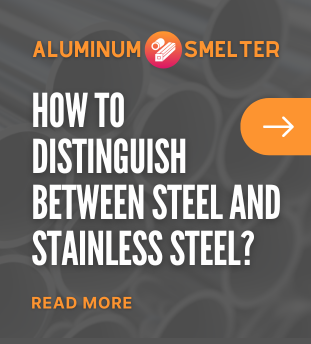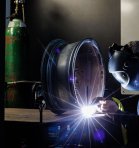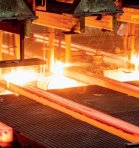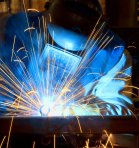In today's booming metal industry, compressed air technology plays a key role. It not only supports production processes, but also increases efficiency and affects the quality of manufactured products. However, compressed air in the metallurgical industry is an issue that requires not only technical knowledge, but also a practical approach. In Poland, where the metallurgical industry has significant traditions, the role of this technology can hardly be overestimated. In this article, we will present the applications, benefits and practical aspects of using compressed air in metallurgy, and discuss why it is an indispensable tool in this sector.
Applications of compressed air in metallurgical processes
In the metallurgical industry, compressed air is widely used in metallurgical processes. From metal recycling to the production of steel and its alloys, compressed air is used at various stages of the production cycle.
Transportation of raw materials and semi-finished products
The transportation of raw materials plays an important role in metallurgy. Compressed air in the metallurgical industry is used to pneumatically transport materials such as iron ore, coal and lime. With compressed air, these materials can be transported quickly and efficiently over long distances, while reducing logistics costs.
Pneumatic transport systems are more reliable and less susceptible to mechanical damage than traditional transport methods. This, in turn, translates into a lower risk of breakdowns and production downtime.
Application in metallurgical furnaces
Compressed air in the metallurgical industry is also crucial in ore sintering processes in metallurgical furnaces. It is used to sustain and control combustion processes and to blow auxiliary fuels such as coke. Precise control of the pressure of the entering air allows the temperature and composition of the flue gas to be adjusted, which translates into the quality of the steel produced.
In addition, compressed air can be used to clean metallurgical furnaces and remove deposits, which in turn results in longer equipment life and lower maintenance costs.
Cooling of machinery and equipment
Another important application is the cooling of machinery and equipment during production. Compressed air in the metallurgical industry can be used to cool tools during cutting operations, preventing overheating and increasing tool life. Efficient cooling also helps maintain stable operating conditions, which is key to ensuring high-quality end products.
Applications in automation and robotics
Modern metallurgy cannot do without advanced automation and robotics systems. Here, too, compressed air in the metallurgical industry plays a significant role. Pneumatic actuators and other devices using compressed air are the basis for automated production systems. This makes it possible to increase the precision and repeatability of production operations.
Advanced control systems, based on compressed air, also make it possible to monitor and control various parameters of metallurgical processes, thus optimizing them and reducing material losses.
Economic and environmental benefits
The use of compressed air in metallurgy brings many benefits, both economically and environmentally. We will look at a few of them.
Energy efficiency
Compressedair in the metallurgical industry is characterized by high energy efficiency. Systems using compressed air are able to operate at lower energy consumption compared to traditional mechanical systems. As a result, companies are able to reduce operating costs, which ultimately increases profitability.
Optimizing energy consumption in metallurgical processes is also beneficial from a sustainability perspective. Less energy consumption means a smaller carbon footprint, which is important in the context of combating climate change.
Reduction of harmful emissions
One of the main environmental benefits of using compressed air in the metallurgical industry is the reduction of harmful emissions into the atmosphere. Thanks to precise control of combustion processes in metallurgical furnaces, it is possible to reduce emissions of nitrogen oxides, sulfur dioxide and dust. This, in turn, translates into improved air quality in the surroundings of industrial plants.
Reduced maintenance costs
Compressed air-based systems are generally less prone to wear and failure compared to mechanical systems. This results in lower maintenance and repair costs, which is an important economic aspect. Longer equipment life also means lower equipment replacement and disposal costs.
Importance for sustainable operation
In the context of sustainable work, compressed air in the metallurgical industry enables more efficient and environmentally safe management of resources. Reducing material losses and optimizing production processes contribute to a more responsible use of raw materials. Companies using compressed air can therefore better achieve their production goals in a sustainable manner.
Impact of compressed air technology on production quality
Production quality is one of the key aspects of operations in the metal industry. Compressed air technology is crucial here.
Precise process control
With the use of compressed air in the metallurgical industry, it is possible to precisely control a variety of production processes. Pneumatic control systems make it possible to accurately monitor and adjust parameters such as pressure, temperature, and gas composition in furnaces.
Precise control affects the quality of manufactured products, minimizing the risk of defects and defective batches. Lengthy processes, in which even small deviations can lead to material losses, become more predictable and stable.
Increase the repeatability of production operations
Pneumatic actuators and control systems that rely on compressed air make it possible to increase the repeatability of production operations. This means that each production step can be exactly the same as the previous one, which is crucial for series production of metal products.
Thanks to reliability and repeatability, the final product meets customer expectations in terms of quality, and this translates into a positive reputation for the company in the market.
Impact on occupational safety
Compressed air in the metal industry also contributes to occupational safety. Pneumatic systems are less risky to use than mechanical ones, especially under the high temperatures and aggressive working environment found in steel mills.
In addition, automation of processes using compressed air reduces the need for manual operation of equipment, which reduces the risk of accidents and injuries to workers.
Innovation and technological development
Compressed air technology in the metallurgical industry is constantly evolving. Modern systems are more efficient, reliable and environmentally friendly. Investment in new technologies allows companies to meet increasing market demands and regulations regarding environmental protection and occupational safety.
New technological solutions can also open up new production opportunities for companies, making them more competitive in the market.
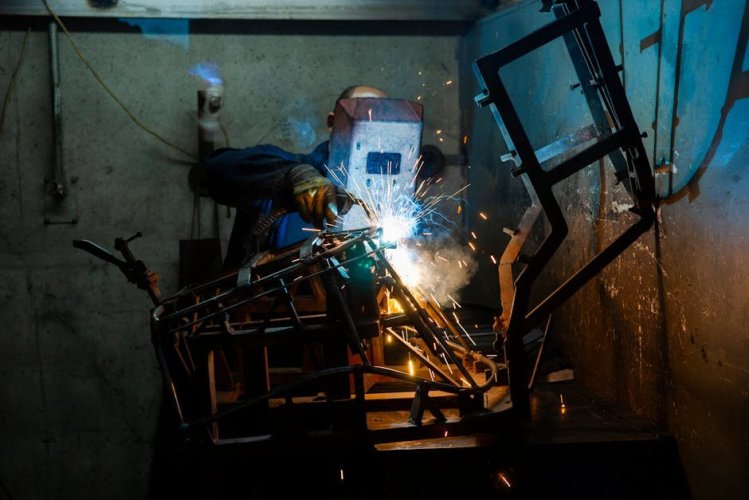
Challenges in the use of compressed air
While compressed air in the metals industry brings many benefits, its use also comes with some challenges that are worth discussing.
Installation and operating costs
One of the main challenges of using compressed air in the metallurgical industry is installation and operating costs. Pneumatic systems require sophisticated infrastructure, including compressors, piping and control systems. Initial capital costs can be high, which can be a barrier for some companies, especially smaller ones.
Operating costs, including energy consumption for air compression, can also be significant. Therefore, it is essential to optimize energy consumption and regularly maintain systems to minimize operating costs.
Maintaining air quality
For compressed air-based systems to operate efficiently, air quality must be adequate. Contaminants, moisture and oils can adversely affect the performance of pneumatic systems, leading to breakdowns and production interruptions. Therefore, it is essential to use air filters and dehumidifiers, and to inspect and maintain systems regularly.
Automation challenges
Automation of production processes using compressed air brings new challenges, such as the need to train personnel and manage complex control systems. Employees must be properly trained to operate and maintain the new technology, which can require additional time and financial investment.
In addition, automation can lead to a reduction in the number of jobs, which is an important social aspect that companies must take into account when implementing new technologies.
Examples of compressed air applications in Polish steel mills
In Poland, compressed air in the metallurgical industry is widely used in many production facilities. Let's take a look at a few examples.
Katowice Steelworks
The Katowice steelworks, which is one of the largest metallurgical plants in Poland, uses compressed air at various stages of production. Pneumatic systems for transporting raw materials, cooling machinery during steel processing, and automatic control systems for metallurgical furnaces are just some of the applications of this technology at the steel mill.
Thanks to advanced pneumatic systems, Huta Częstochowa can produce high-quality steel while meeting energy efficiency and environmental protection requirements.
Częstochowa Steelworks
The Częstochowa Steelworks, which specializes in the production of steel plates, also uses compressed air in the metallurgical industry. Pneumatic cooling and material handling systems help increase production efficiency and improve product quality.
ArcelorMittal Poland
ArcelorMittal Poland, one of the leaders in the metals industry, also uses compressed air in its plants. Innovative pneumatic systems are used in the production processes of steel and its alloys, including steelmaking furnaces, raw material handling systems and industrial automation and robotics.
By investing in cutting-edge technology, ArcelorMittal Poland is able to meet market demands and conduct sustainable production in accordance with high quality and safety standards.
The future of compressed air technology in metallurgy
Looking to the future, compressed air technology in the metallurgical industry will evolve, bringing with it new opportunities and challenges.
Technological innovations
Further developments in compressed air technology are expected to include innovations in energy efficiency, reliability and ecology. Modern compressors with higher efficiency, advanced control systems, and innovative air filtration and drying solutions will be crucial to the future of metallurgy.
Integration with other technologies
Compressed air technology will be increasingly integrated with other advanced technologies, such as Industry 4.0, artificial intelligence and the Internet of Things (IoT). This will enable even more precise monitoring and control of production processes, further increasing production efficiency and quality.
Sustainability and environmental aspects
The future of compressed air technology in the metallurgical industry will also depend on sustainability and ecological aspects. The metallurgical industry will have to meet increasingly stringent regulations regarding environmental protection and sustainable use of resources. Compressed air technology, with its energy efficiency and ability to reduce emissions, will play a key role in achieving these goals.
Impact on global competitiveness
The use of modern compressed air technology can also affect the global competitiveness of the Polish metals industry. Companies that invest in modern pneumatic systems can increase their production efficiency and quality, which allows them to better compete in the global market.
Summary
Compressed air in the metallurgical industry plays an extremely important role, enabling a variety of production processes, from the transportation of raw materials, to the control of combustion processes, to the cooling of machinery and automation. Benefits arise from energy efficiency, increased production quality, as well as economic and environmental aspects.
Despite the challenges of installation and operating costs and the need to maintain air quality, compressed air technology in the Polish metallurgical industry is developing rapidly. The future of compressed air technology promisingly points to further innovation, integration with modern technologies and the pursuit of sustainable development.
With compressed air, the Polish metallurgical industry can not only meet the challenges of the modern market, but also carry out efficient and responsible production, contributing to sustainable development and environmental protection.


